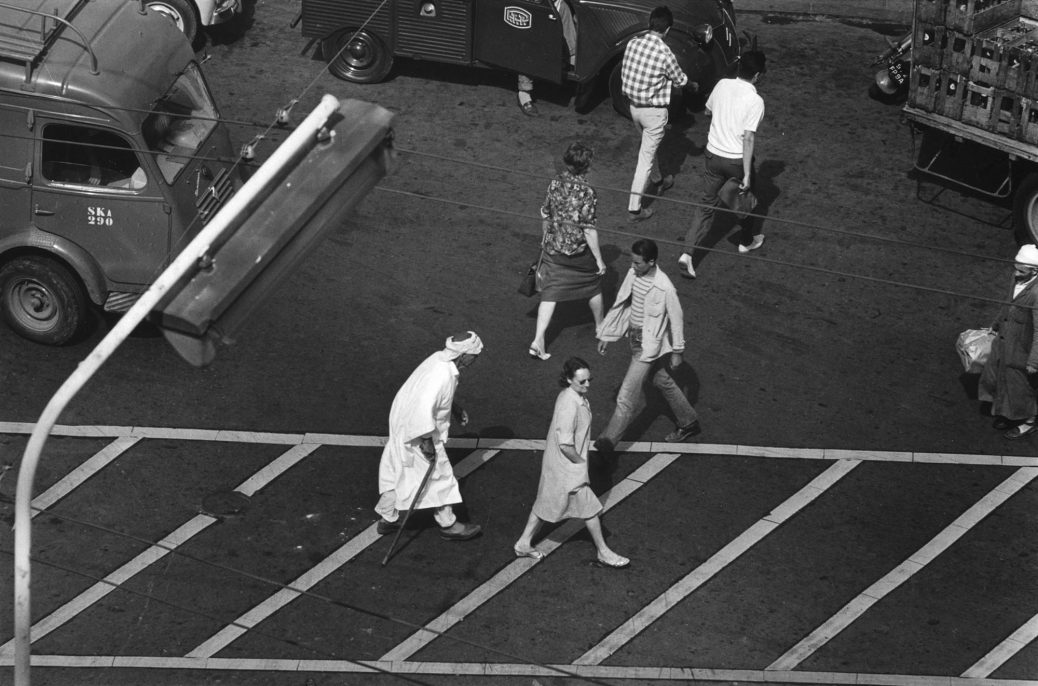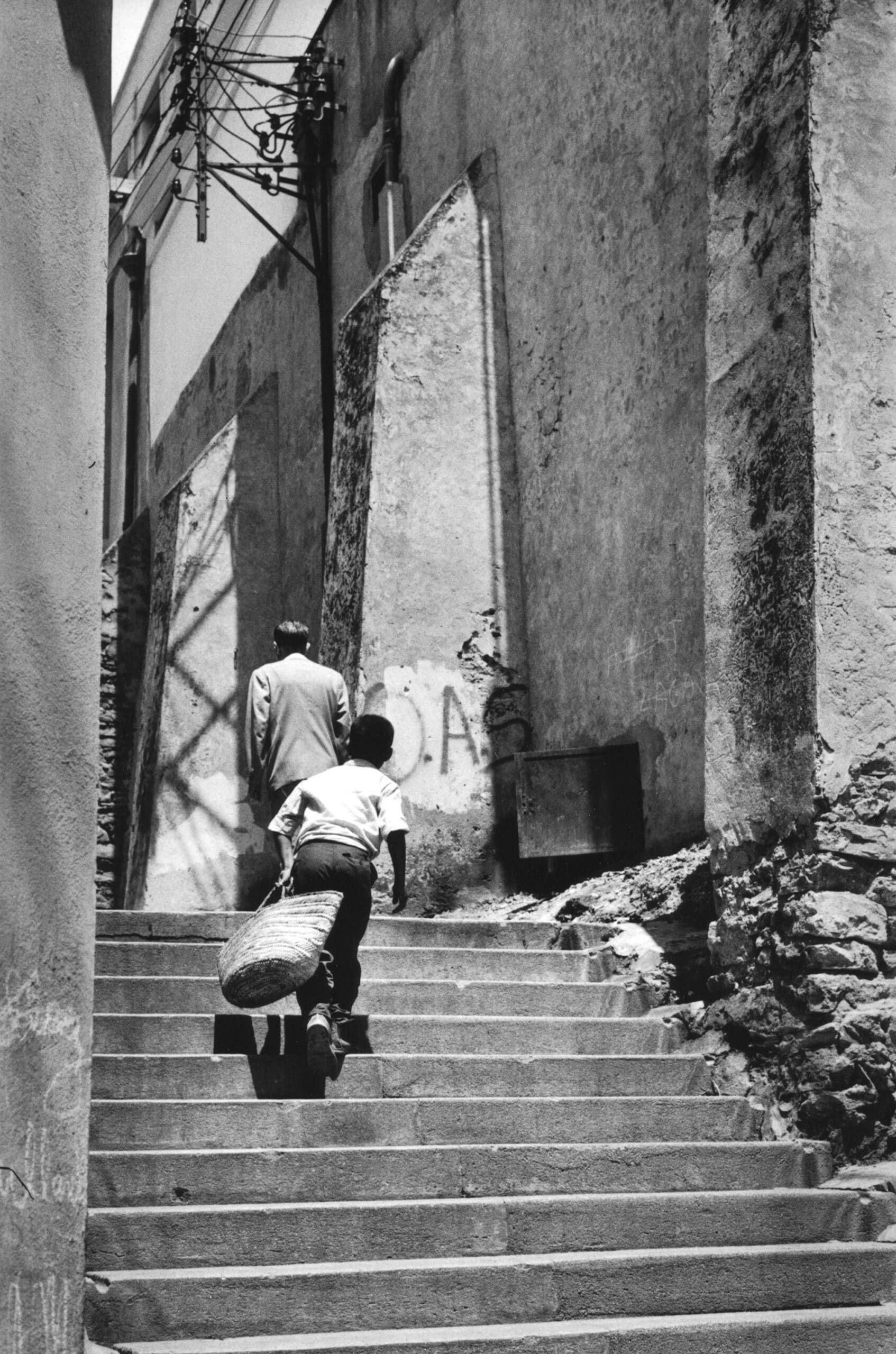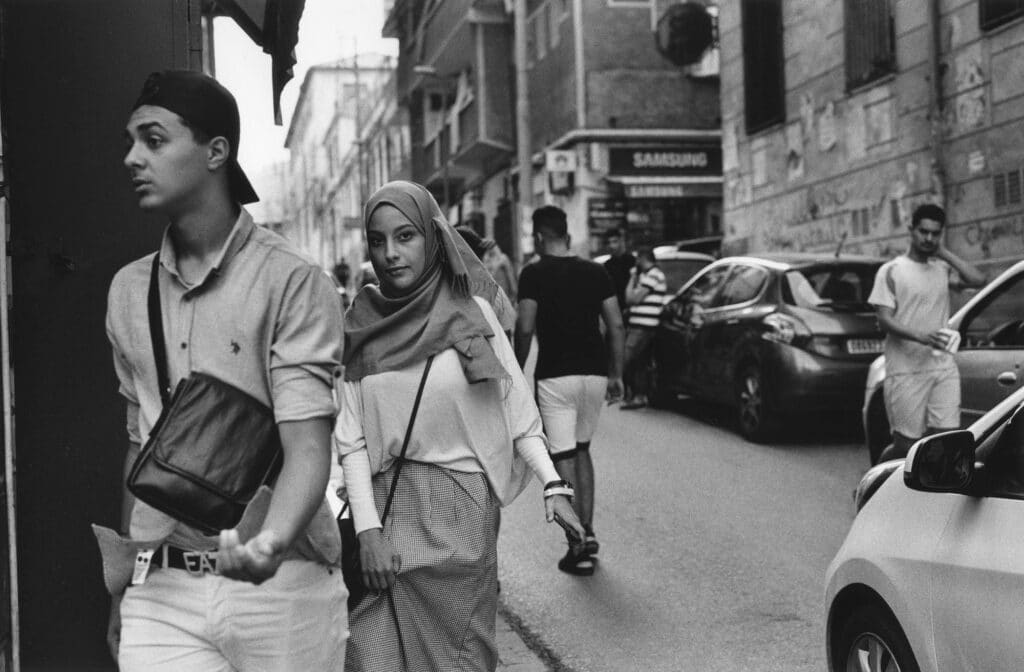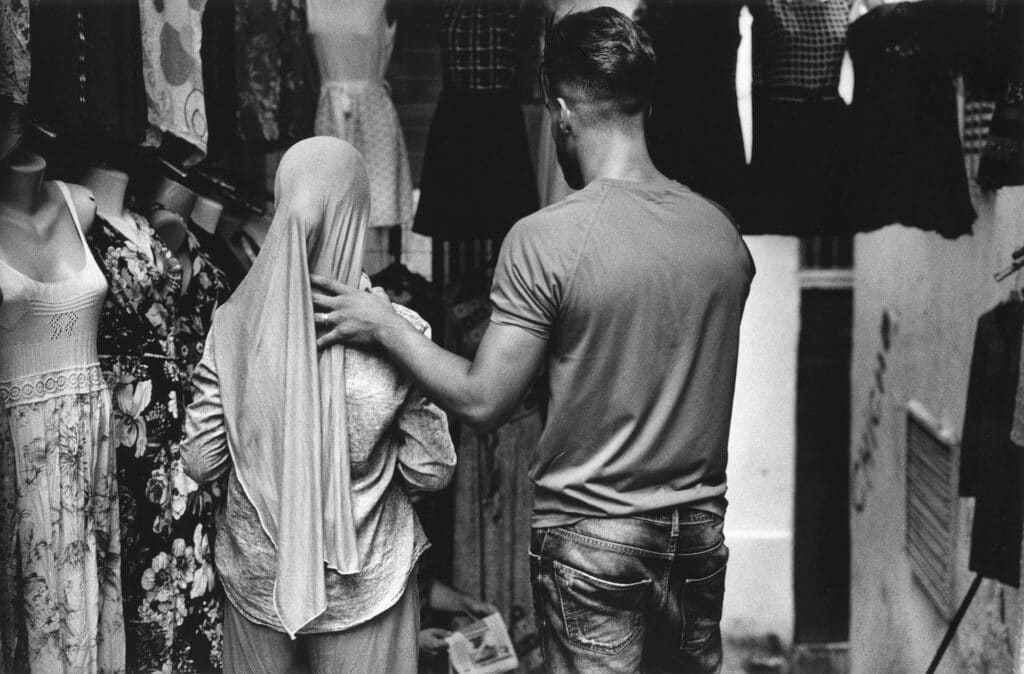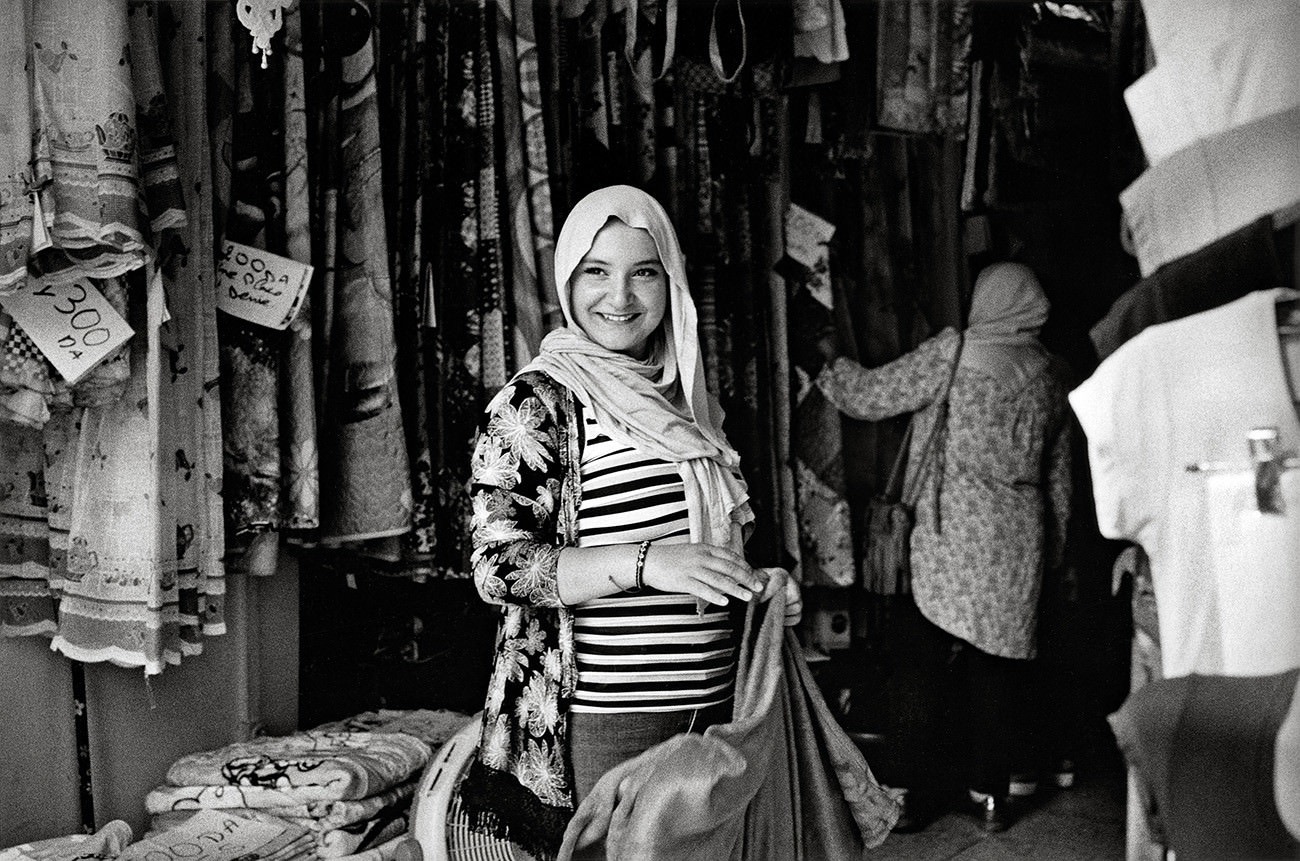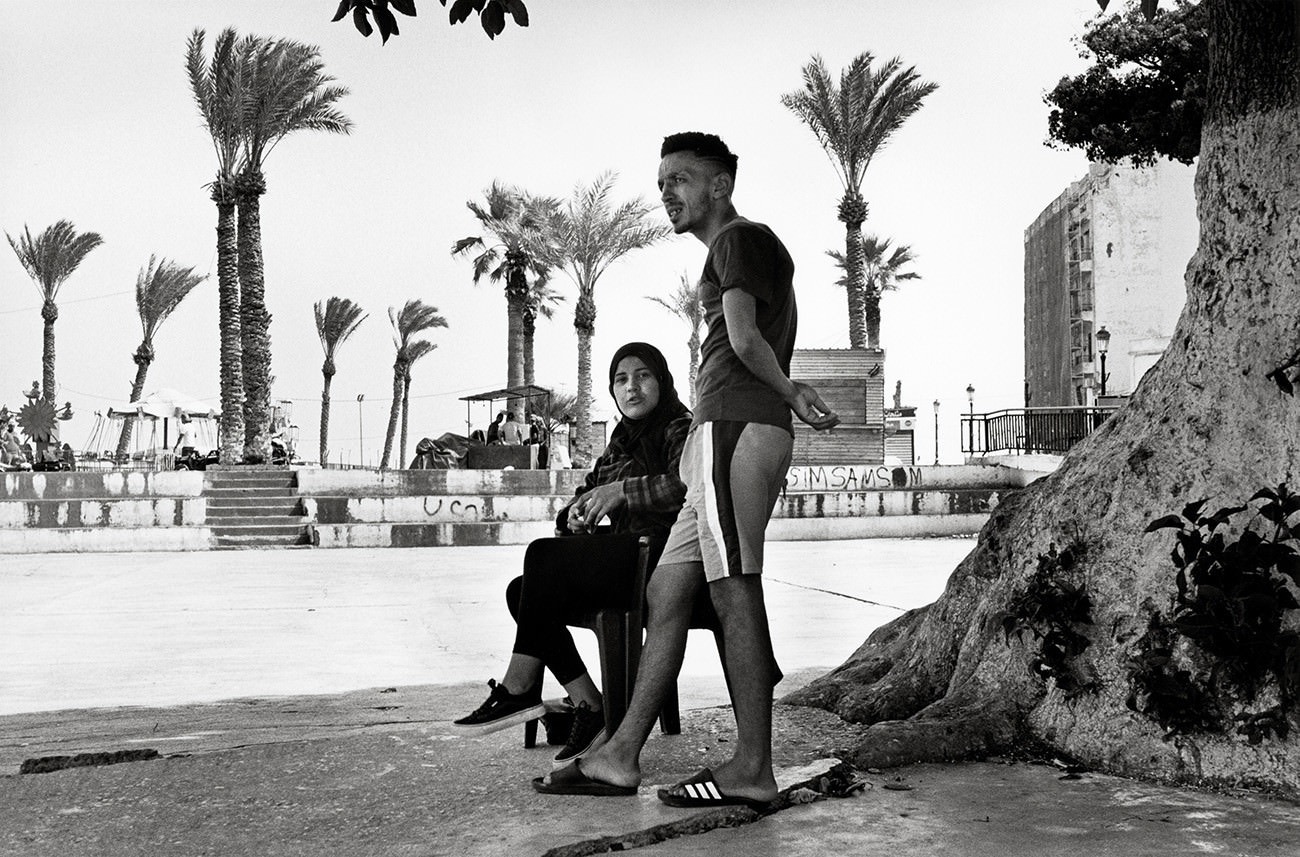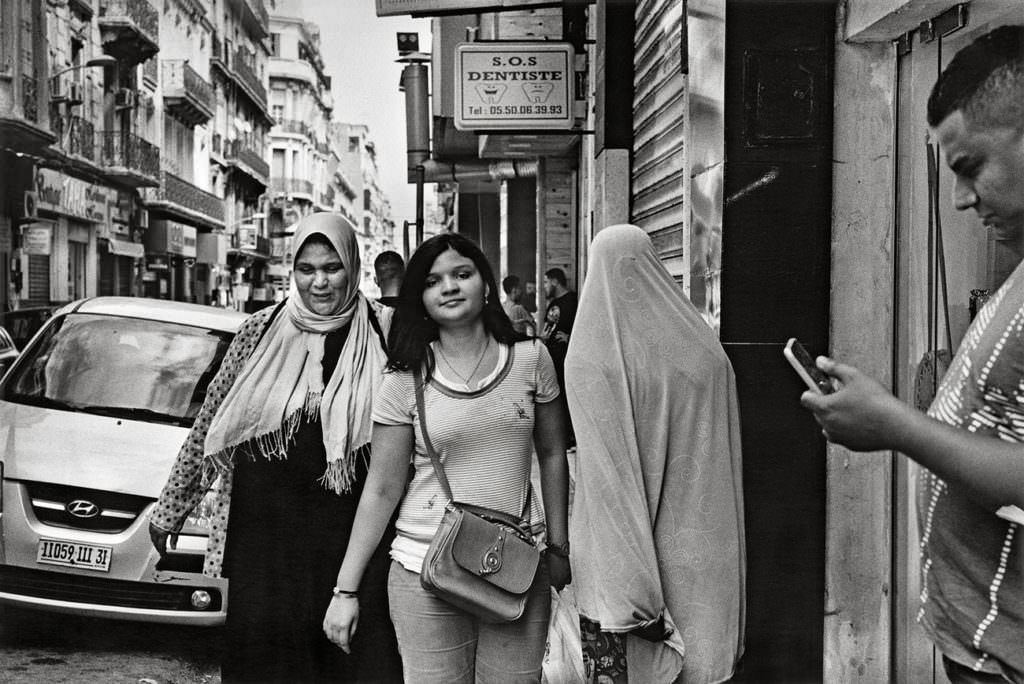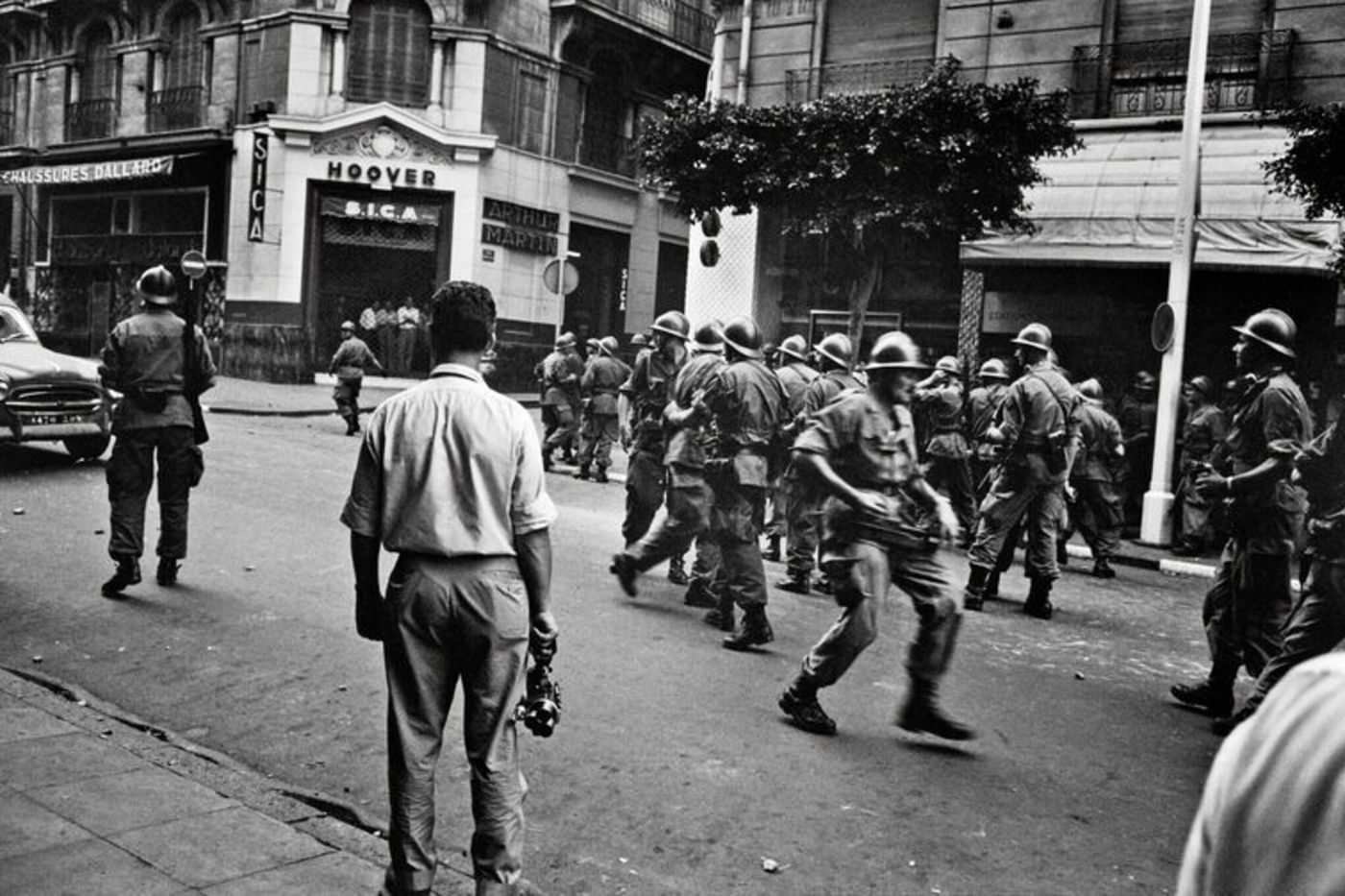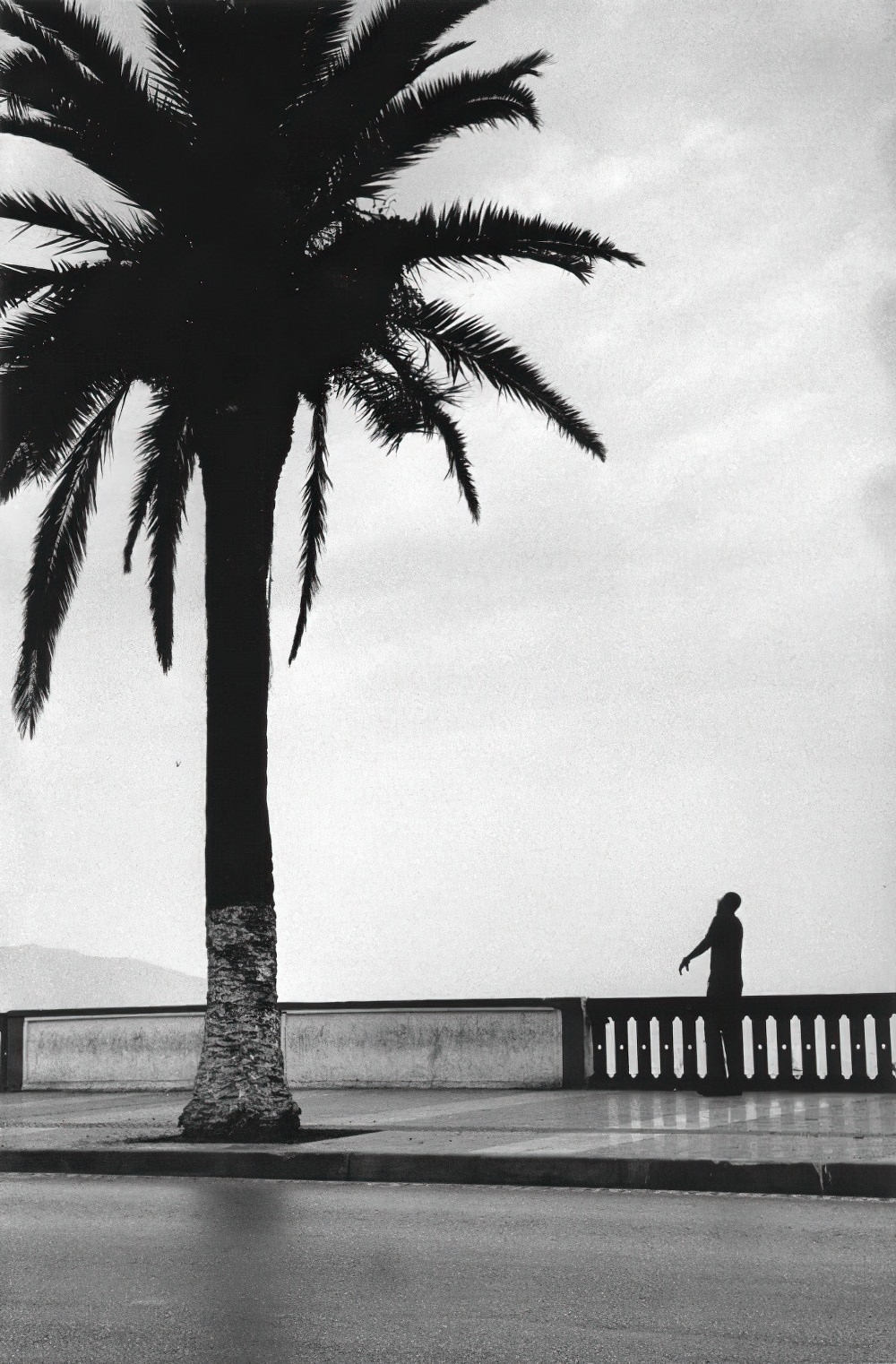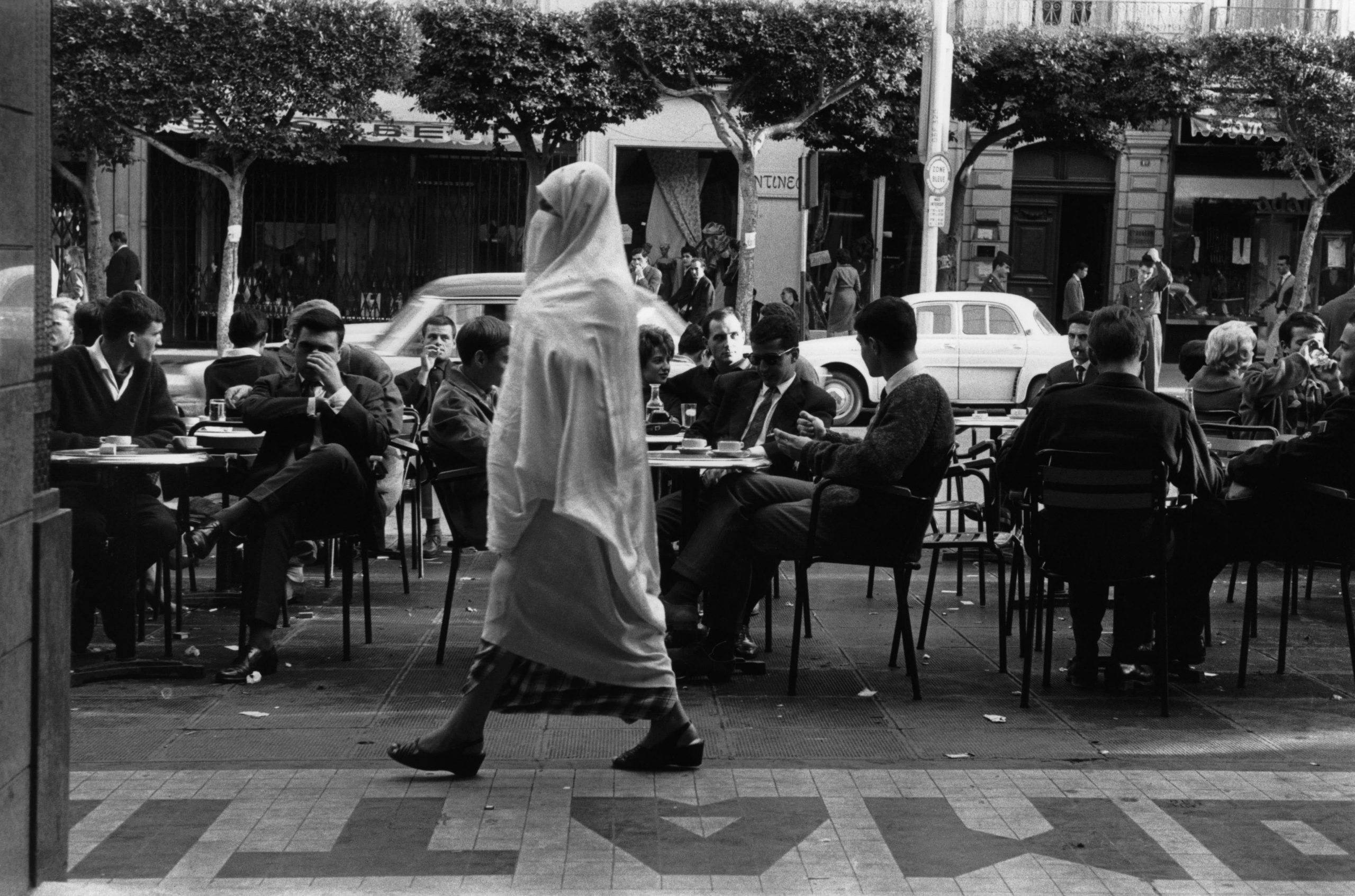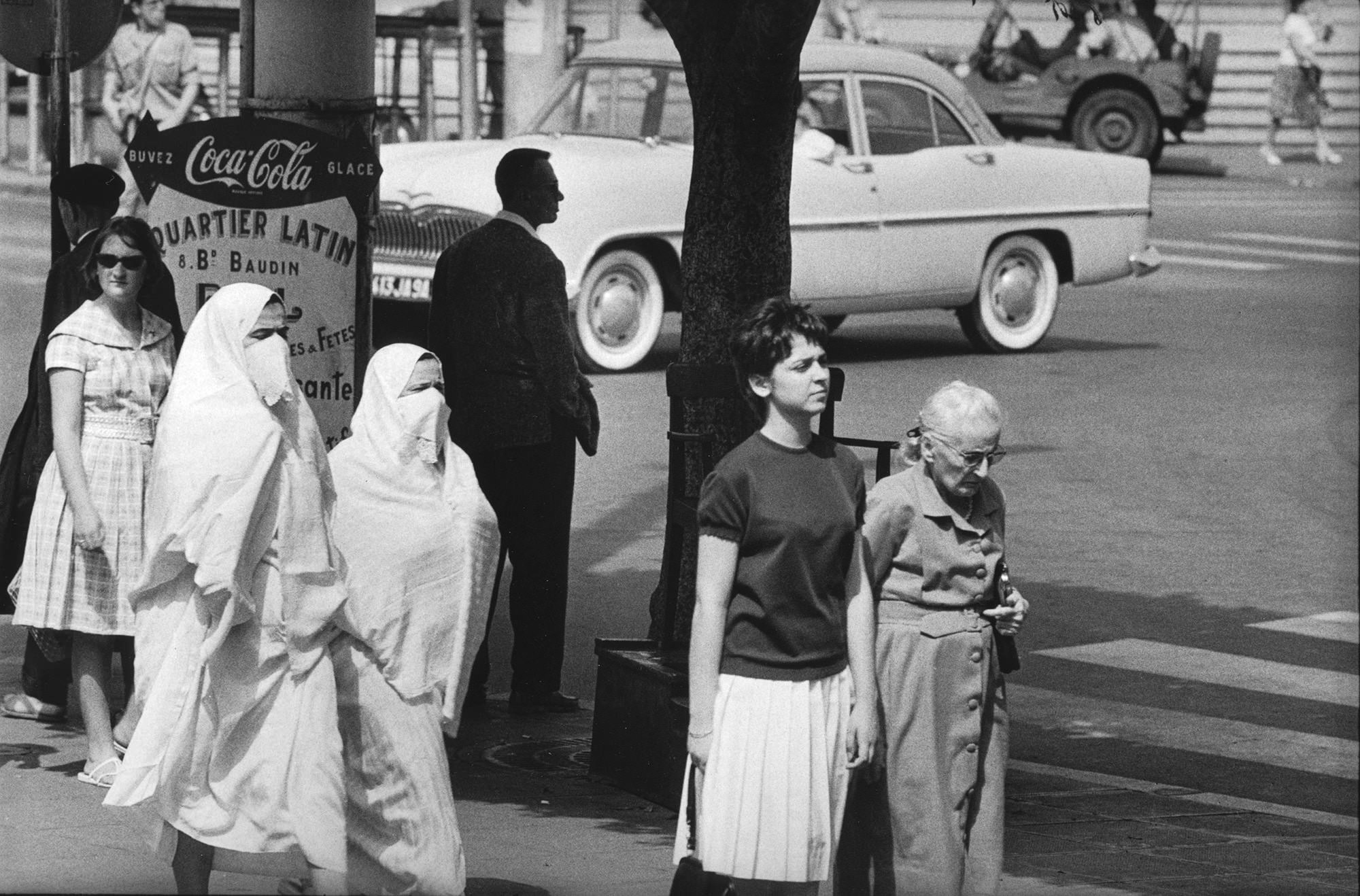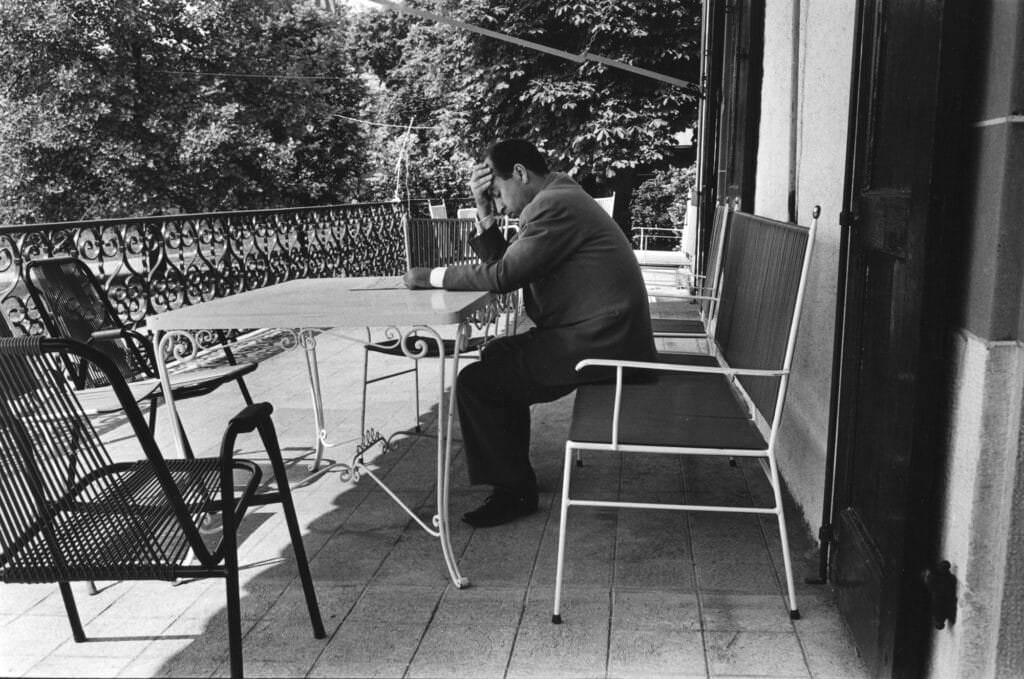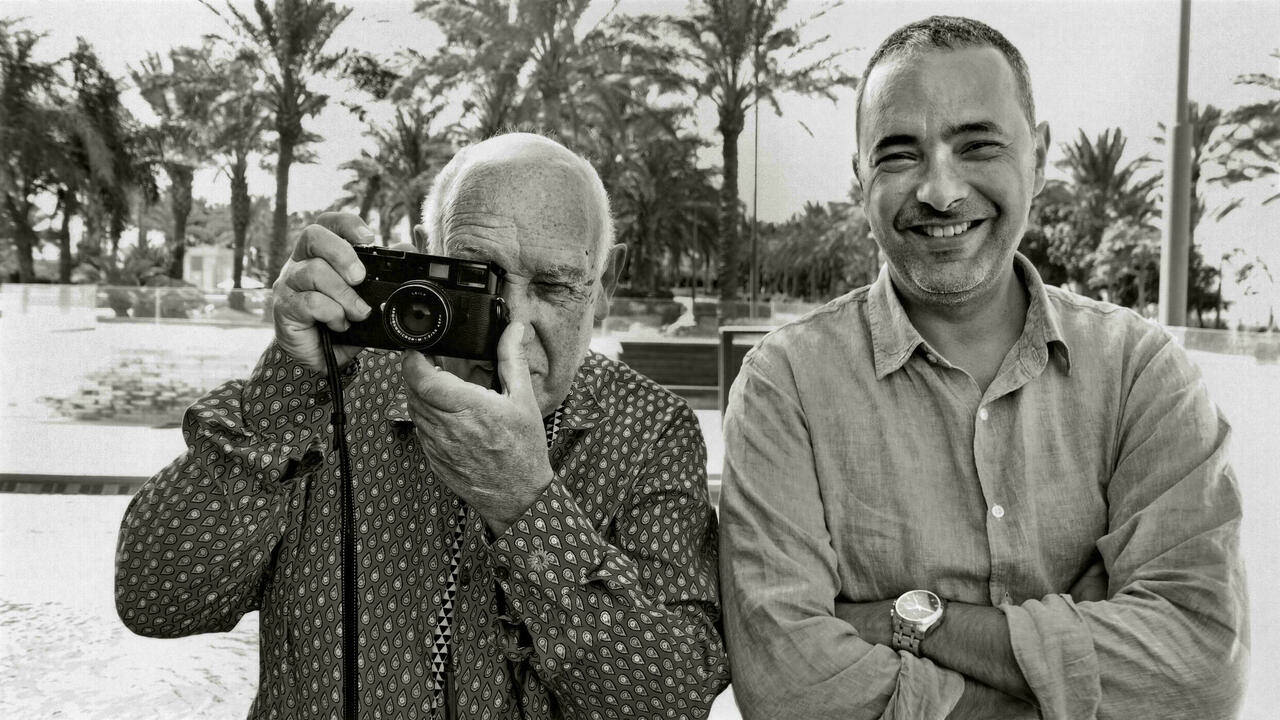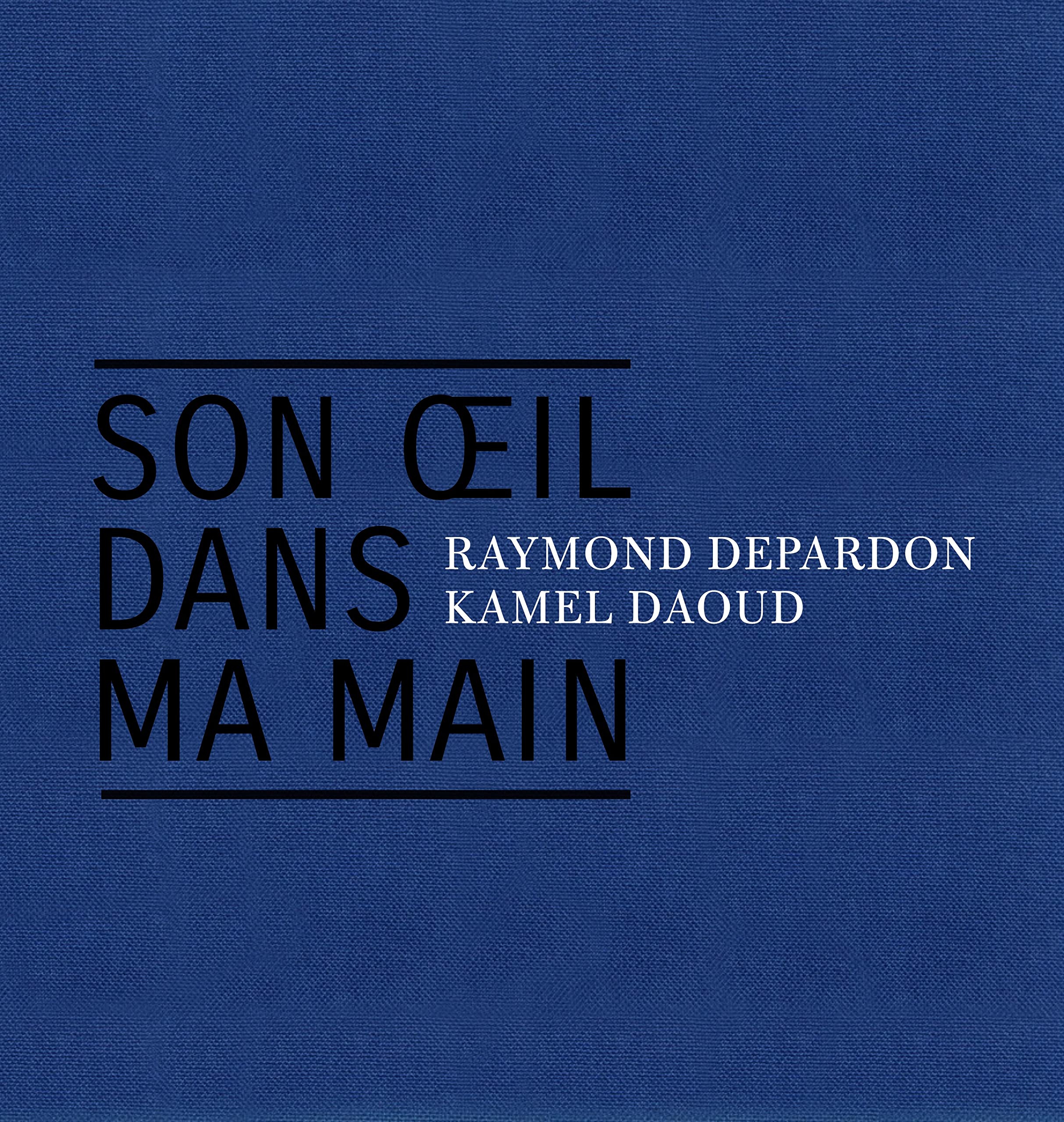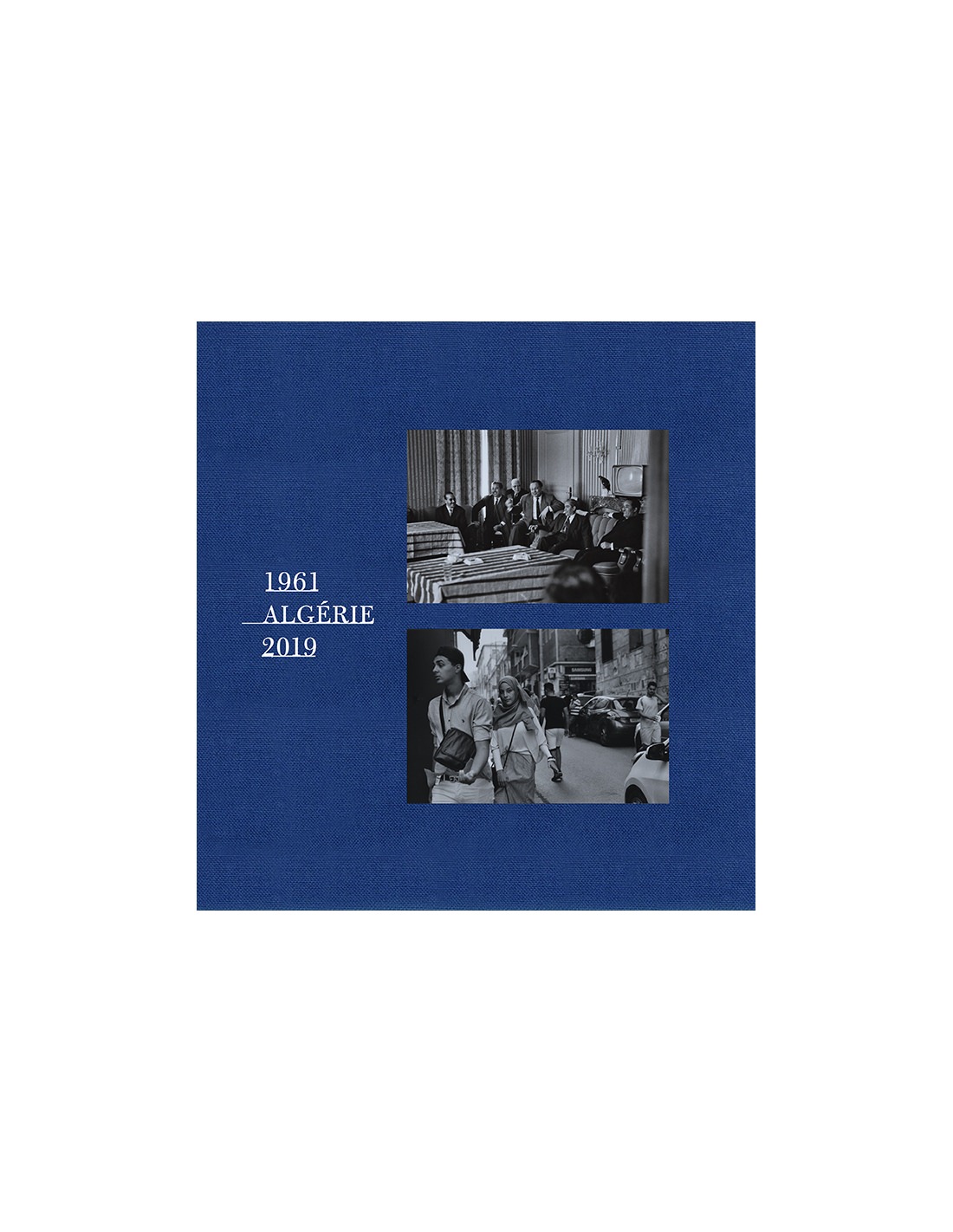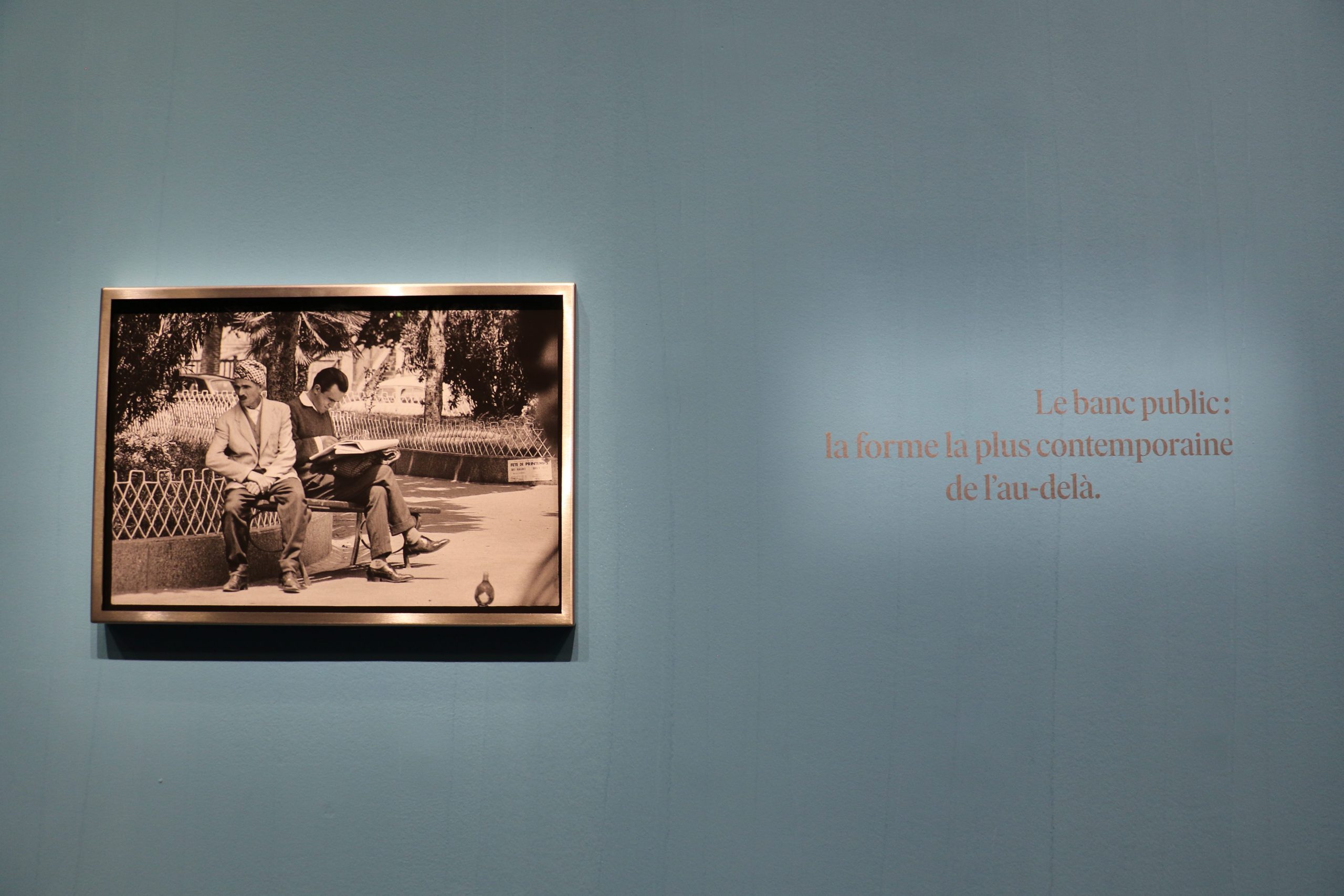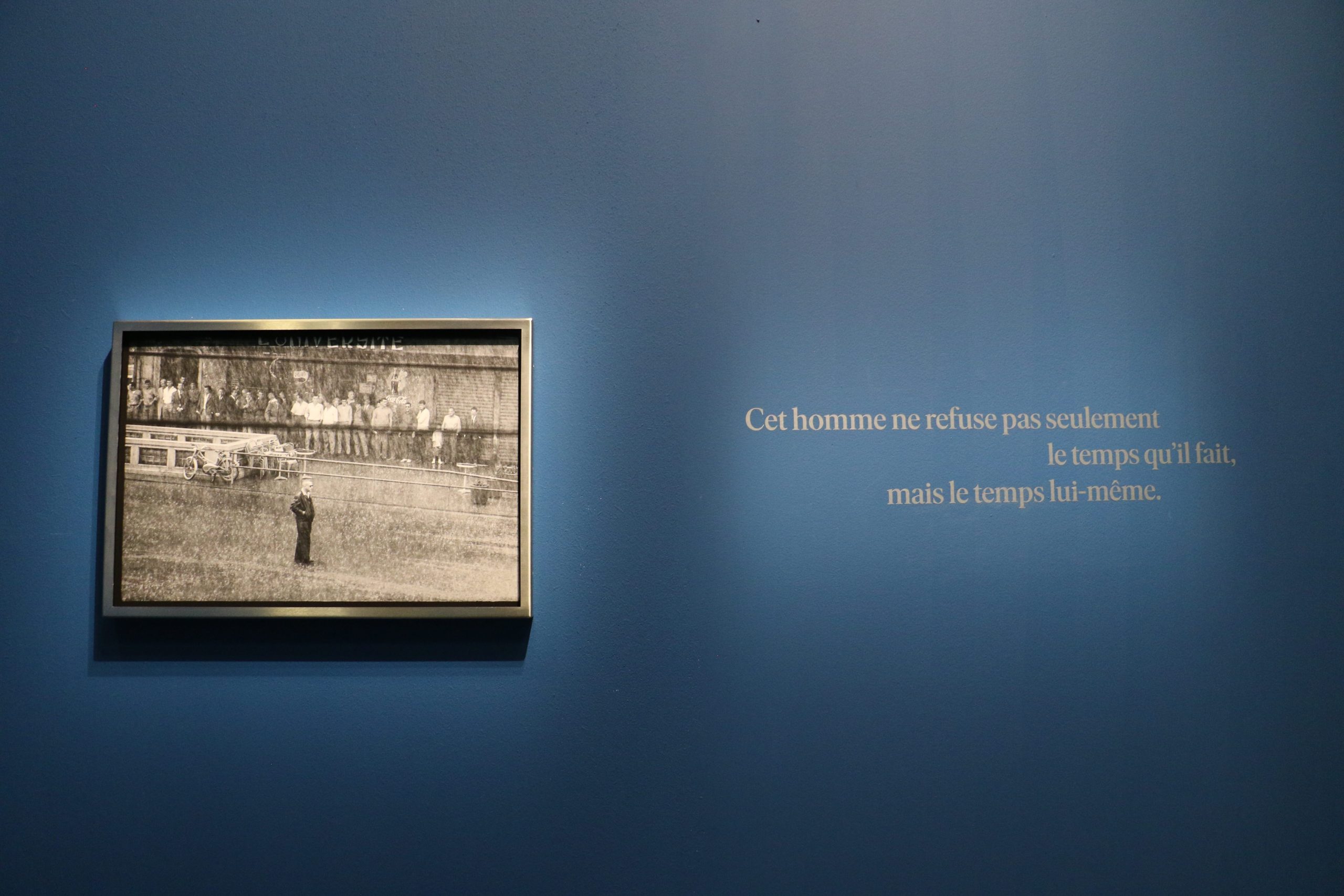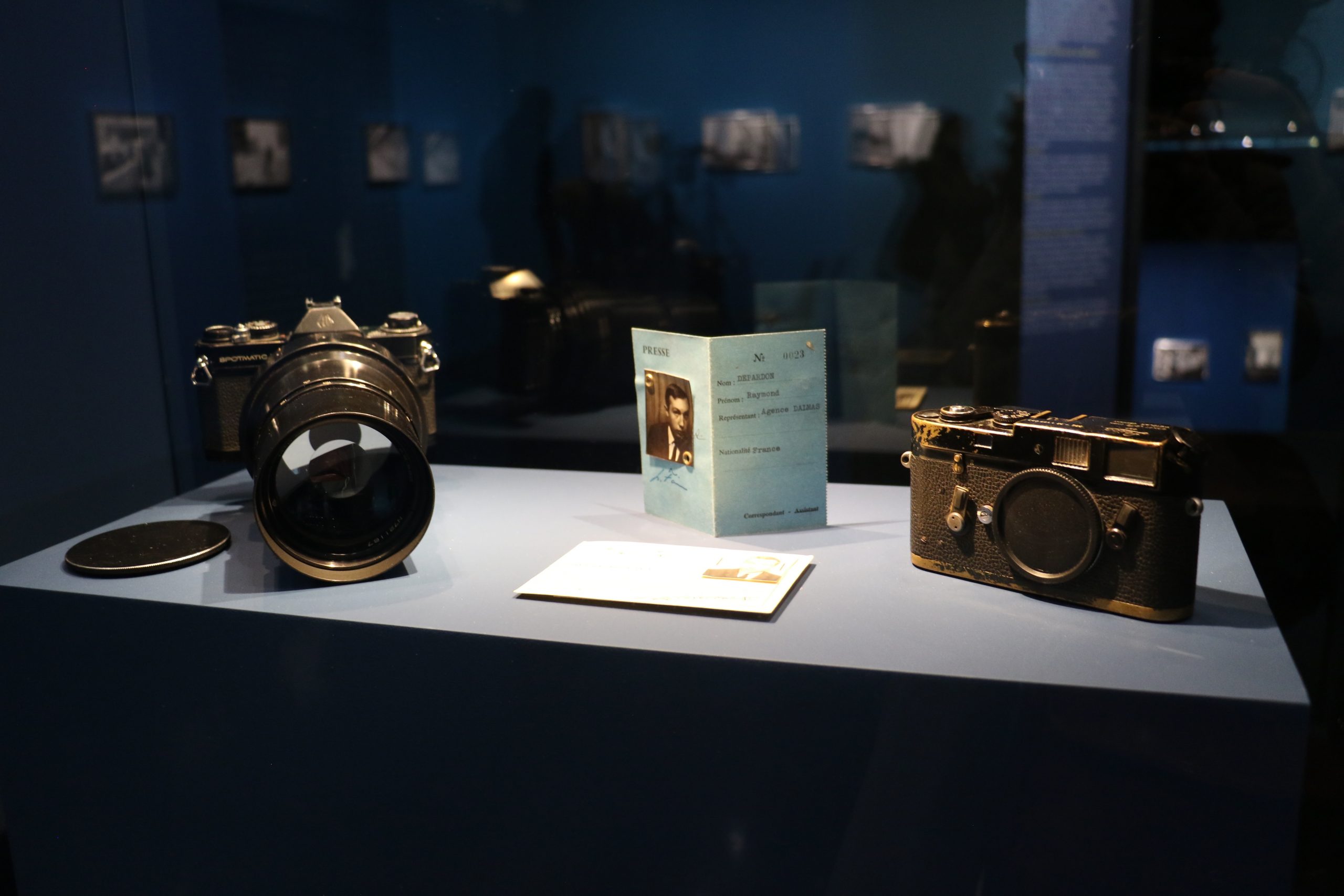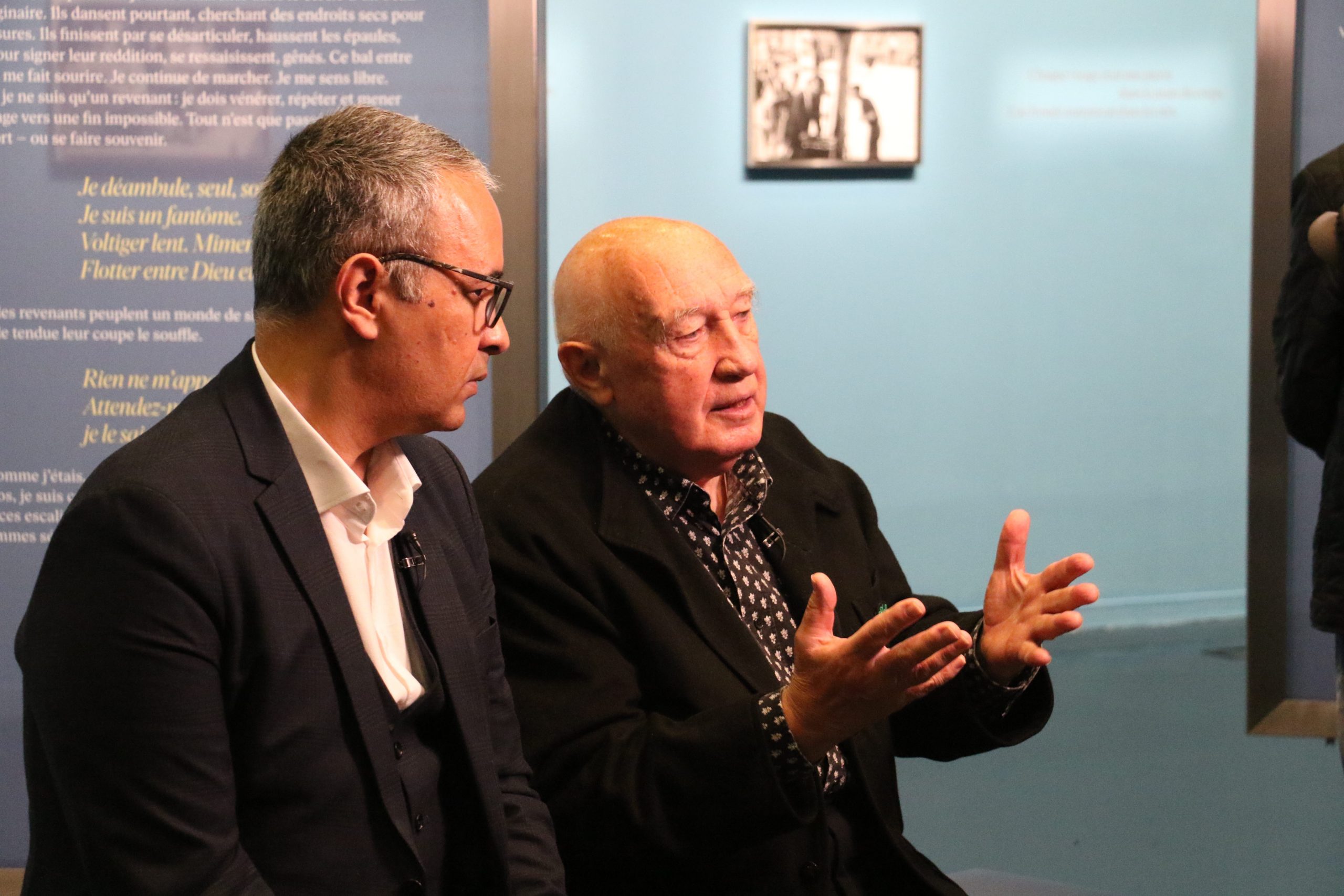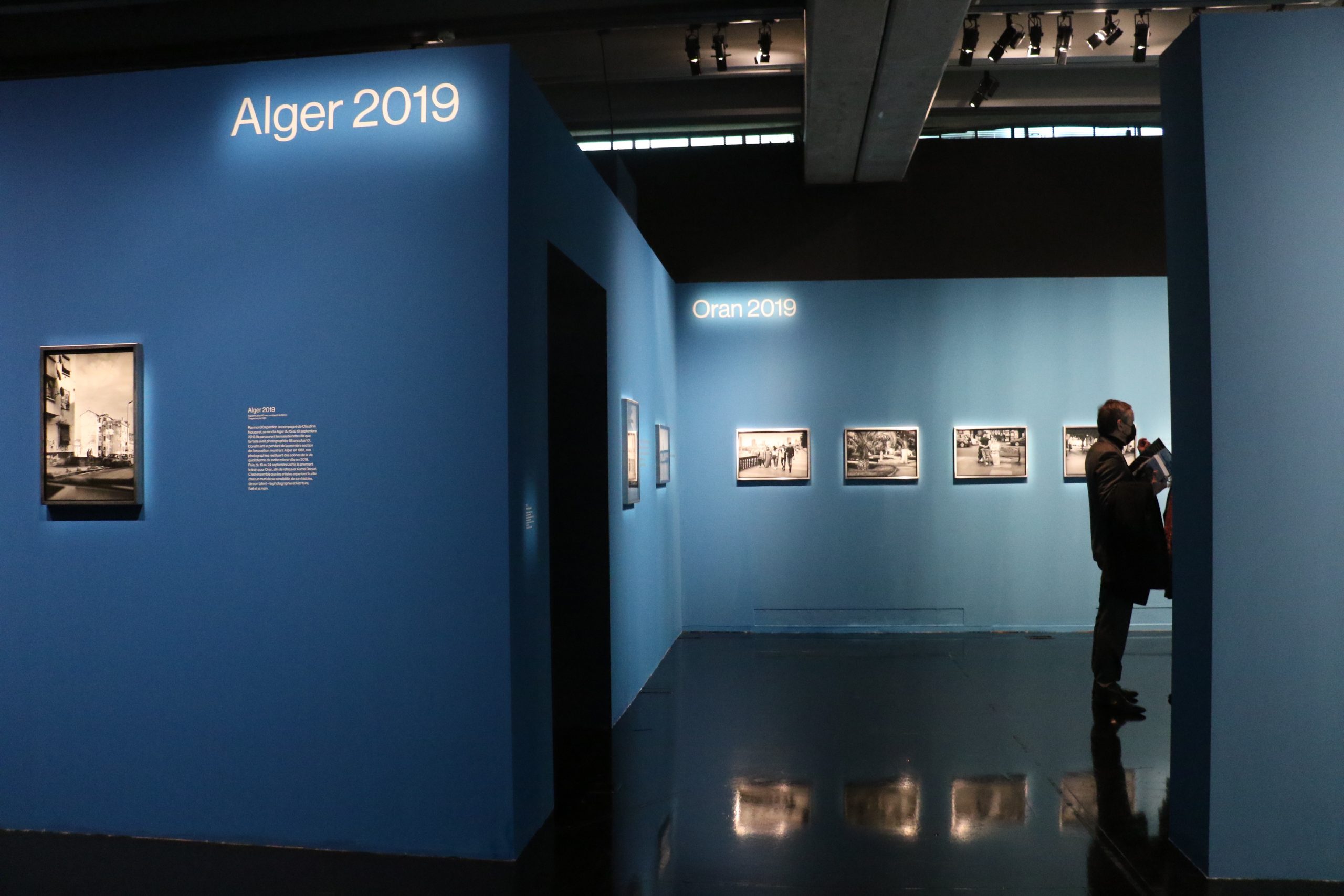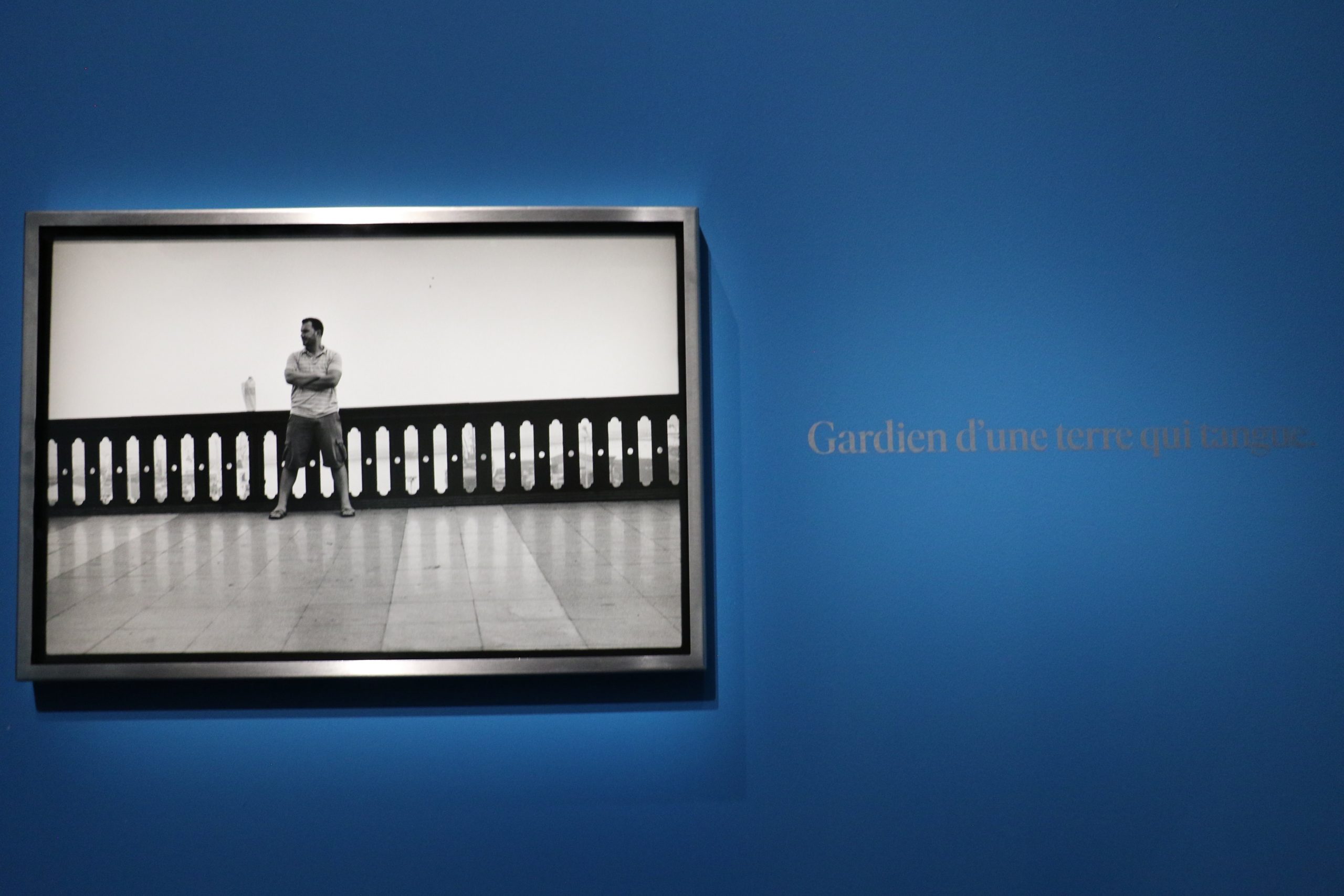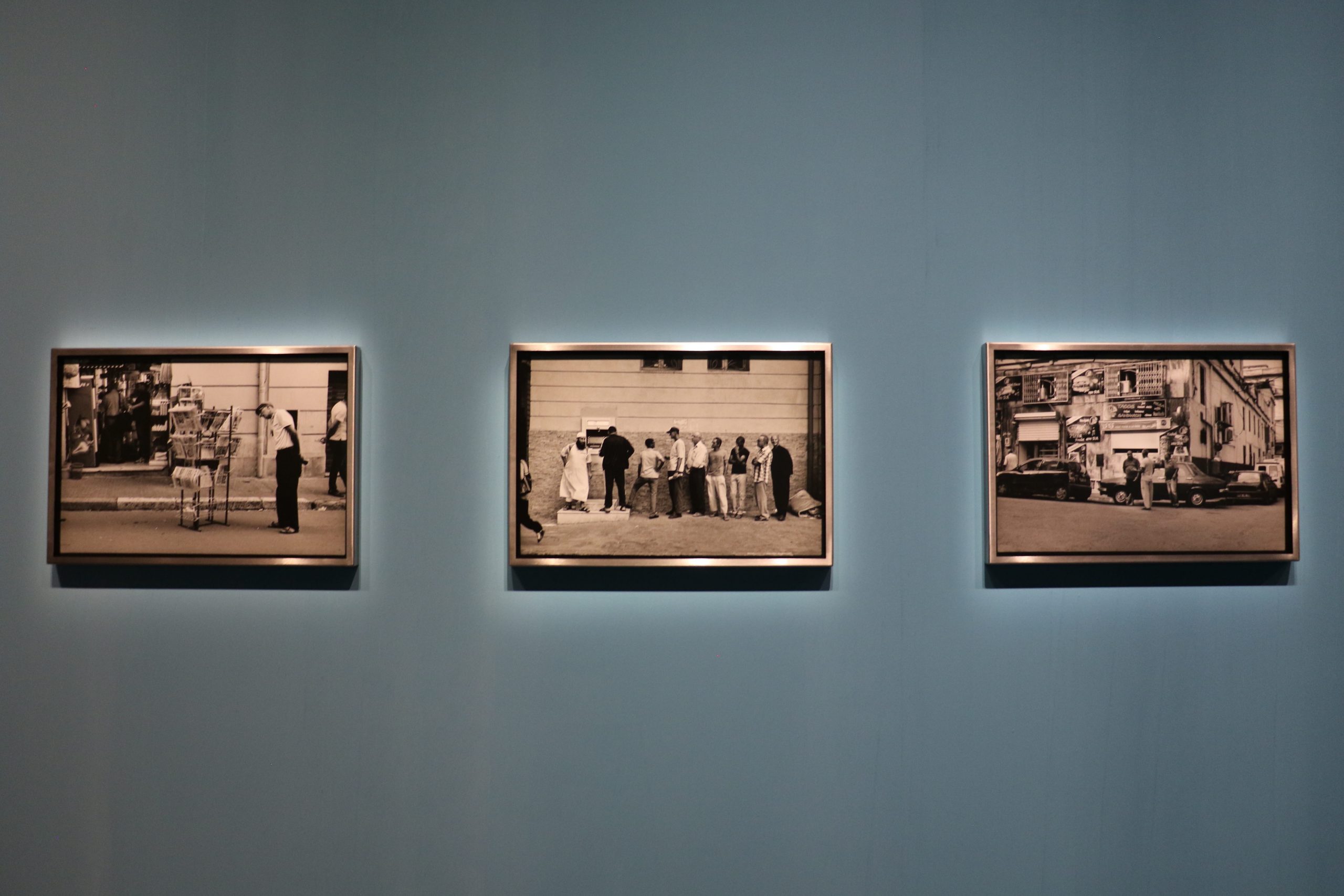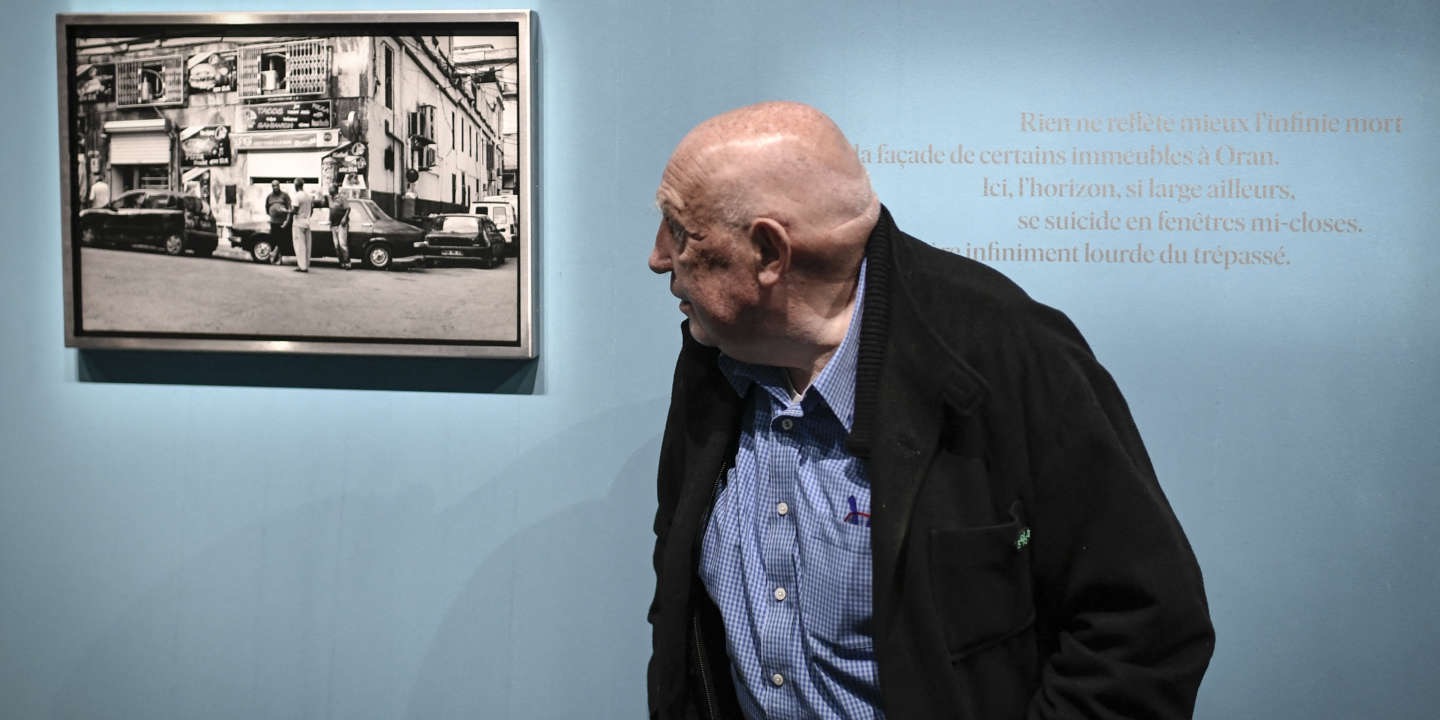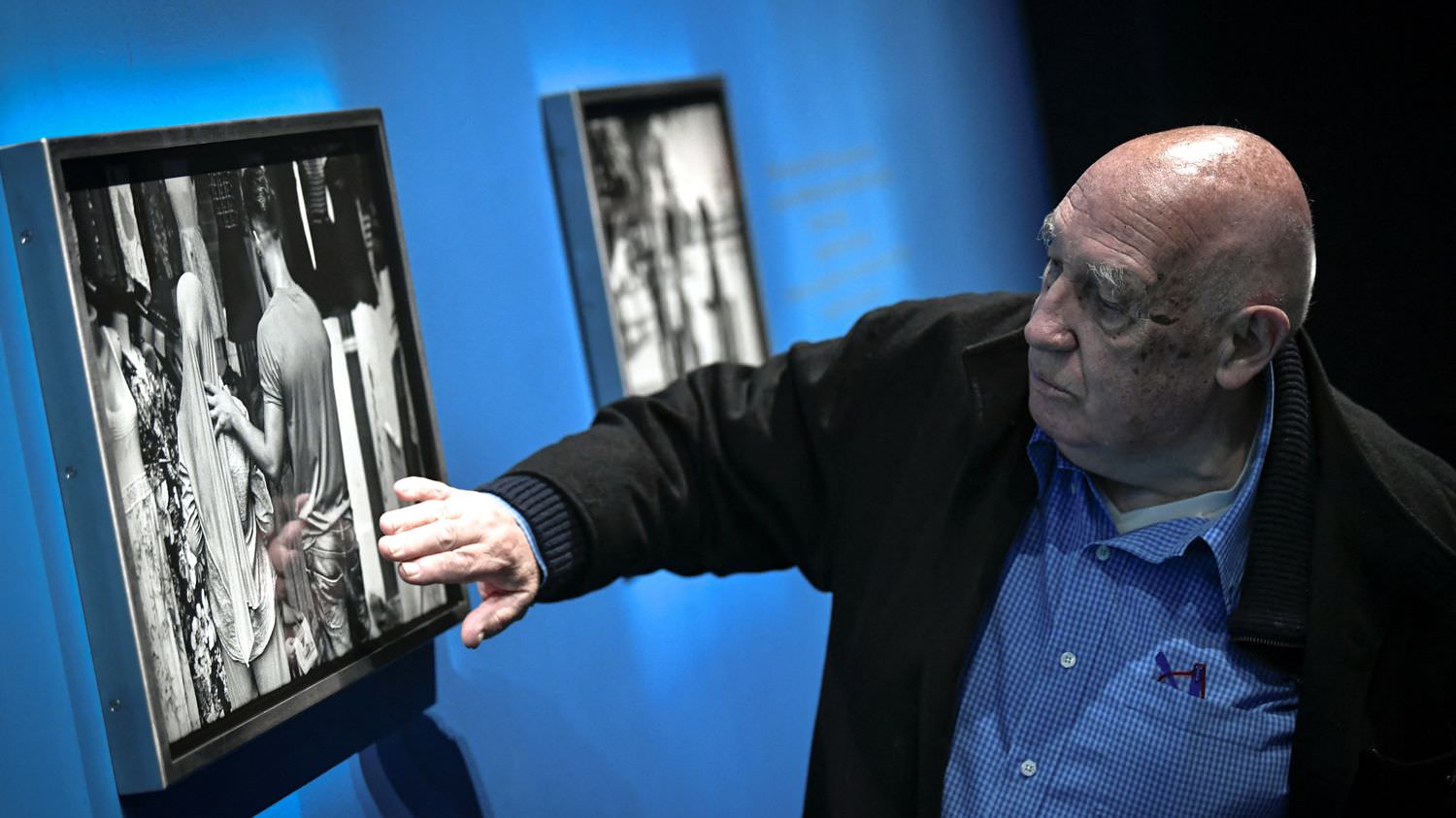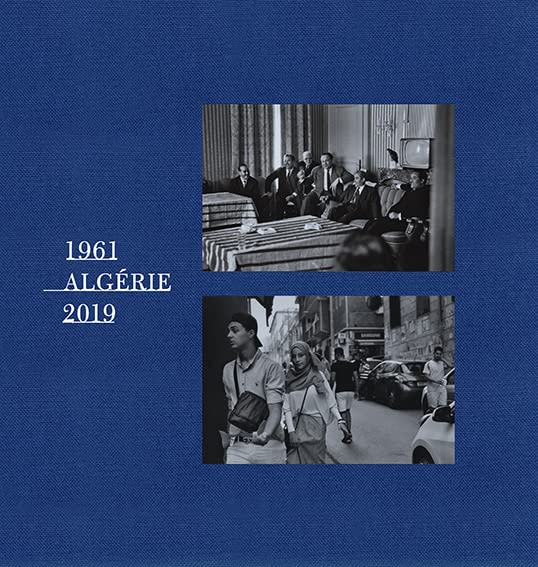Raymond Depardon / Kamel Daoud: Son œil dans ma main. Algérie 1961-2019
With the approach of the 60th anniversary of the independence of Algeria, the exhibition “Son œil dans ma main. Algérie 1961-2019. Raymond Depardon / Kamel Daoud” offers testimony on Algeria in 1961 than in 2019, through the concern of two great artists: one French, filmmaker, and photographer, revisiting his photos of Algeria; the other Algerian, journalist, and writer, born in 1970, after the independence of his country.
In 1961, the very young Raymond Depardon produced several photographic reports in Algiers, then in Évian, during the first negotiations to end the Algerian war. Almost sixty years later, he met Kamel Daoud with the desire to publish these photographs from an Algerian perspective.
Led by Barzakh, the writer’s Algerian publishing house, a four-handed book project is taking shape: a beautiful book bringing together “Algerian” photographs from 1961 and unpublished texts by Kamel Daoud. This one has the idea of writing very different texts, almost separate from the photos; it will be meditations or wild daydreams. In addition, “ comets ” – an explanation of the image, a commentary, a flash inspired by a photograph… – will accompany a selection of photos chosen by the artist.
Raymond Depardon returned to Algeria in 2019 and took a series of photos there, in Algiers and then in Oran, the city where Kamel Daoud lives.
Barzakh editions then offered the Institut du monde Arabe to mount an exhibition based on the book. Its president Jack Lang was immediately won over: the release of the book accompanied by an eponymous, sensitive exhibition, with rare images and unpublished texts which will echo each other while being able to be seen or read separately: two worlds, two independent and yet complementary views that mutually enrich each other.
The exhibition presents 80 photographs by Raymond Depardon and five unpublished texts by Kamel Daoud.
It comprises three sections: Algiers 1961; Évian-Bois d’Avault 1961 / Oranie 1961 (level -1); Algiers and Oran 2019 (level -2). In rooms enhanced with a gradation of blues evocative of the Mediterranean, through a fluid scenography that facilitates the passage between the two mediums, the visitor navigates between the significant texts, suspended like so many installations, and offering transparency that suggests images through them.
Texts and photographs are framed identically to emphasize their equal importance. The “comets” are treated like so many small works, forming a horizon line towards which the gaze tends. An “exfiltration text” guides the visitor to the exit; and a new film with Raymond Depardon and Kamel Daoud, Kamel and Raymond (22′), directed by Claudine Nougaret for the exhibition, concludes the itinerary.
About the Authors
Raymond Depardon, born in France in 1942, began taking photographs on his family farm in Garet at the age of 12. Apprenticed to a photographer-optician in Villefranche-sur-Saône, he left for Paris in 1958.
He joined the Dalmas agency in Paris in 1960 as a reporter, and in 1966 he co-founded the Gamma agency, reporting from all over the world. From 1974 to 1977, as a photographer and filmmaker, he covered the kidnap of a French ethnologist, François Claustre, in northern Chad. Alongside his photographic career, he began to make documentary films: 1974, Une Partie de Campagne, and San Clemente.
In 1978, Depardon joined Magnum and continued his reportage work until the publication of Notes in 1979 and Correspondance New Yorkaise in 1981. In that same year, Reporters came out and stayed on the programme of a cinema in the Latin Quarter for seven months. In 1984, he took part in the DATAR project in the French countryside.
While still pursuing his filmmaking career, he received the Grand Prix National de la Photographie in 1991. His films also won recognition: in 1995 his film Délits Flagrants, on the French justice system, received a César Award for best documentary, and in 1998 he undertook the first in a series of three films devoted to the French rural world. The Maison Européenne de la Photographie in Paris mounted an important exhibition of his work in 2000. The sequel to his work on French justice was shown as part of the official selection at the Cannes Film Festival in 2004.
As part of an initiative by the Fondation Cartier for contemporary art, Depardon made an installation of films on twelve large cities, shown in Paris, Tokyo and Berlin between 2004 and 2007. In 2006, he was invited to be the artistic director of the Rencontres Internationales d’Arles. He has made eighteen feature-length films and published forty-seven books. (via magnumphotos.com)
Kamel Daoud, (born June 17, 1970, Mostaganem, Algeria), Algerian writer and journalist who won the Prix Goncourt du Premier Roman for his novel Meursault, contre-enquête (2013; The Meursault Investigation).
Daoud, the eldest of six children, was born into an Arabic-speaking Muslim family in Algeria. As a teenager, he embraced the emerging Islamic movement during the early 1980s, but he became disillusioned and openly opposed to religious fervor. He later was outspoken in his criticism of contemporary Algerian society and rejected the tenets of what he saw as misguided nationalism and Islamism that denied self-expression and intellectual freedom.
After having studied French literature at the University of Oran, Daoud decided on a career as a writer. He established himself as a journalist, and in 1996 he became affiliated with Le Quotidien d’Oran, a French-language newspaper, to which he contributed a regular column under the title “Raina Raikoum” (“My Opinion, Your Opinion”). He published a selection of his commentary in 2002, followed by the novellas La Fable du nain (2003; “The Fable of the Dwarf”) and Ô Pharaon (2004; “Pharaoh”). In 2008 he released La Préface du nègre (“The Preface of the Negro”), a collection of short stories that was republished in 2011 as Le Minotaure 504. (via britannica.com)
Raymond Depardon / Kamel Daoud: Son œil dans ma main. Algérie 1961-2019
8 February 2022 to 17 July 2022
Arab World Institute – Paris

